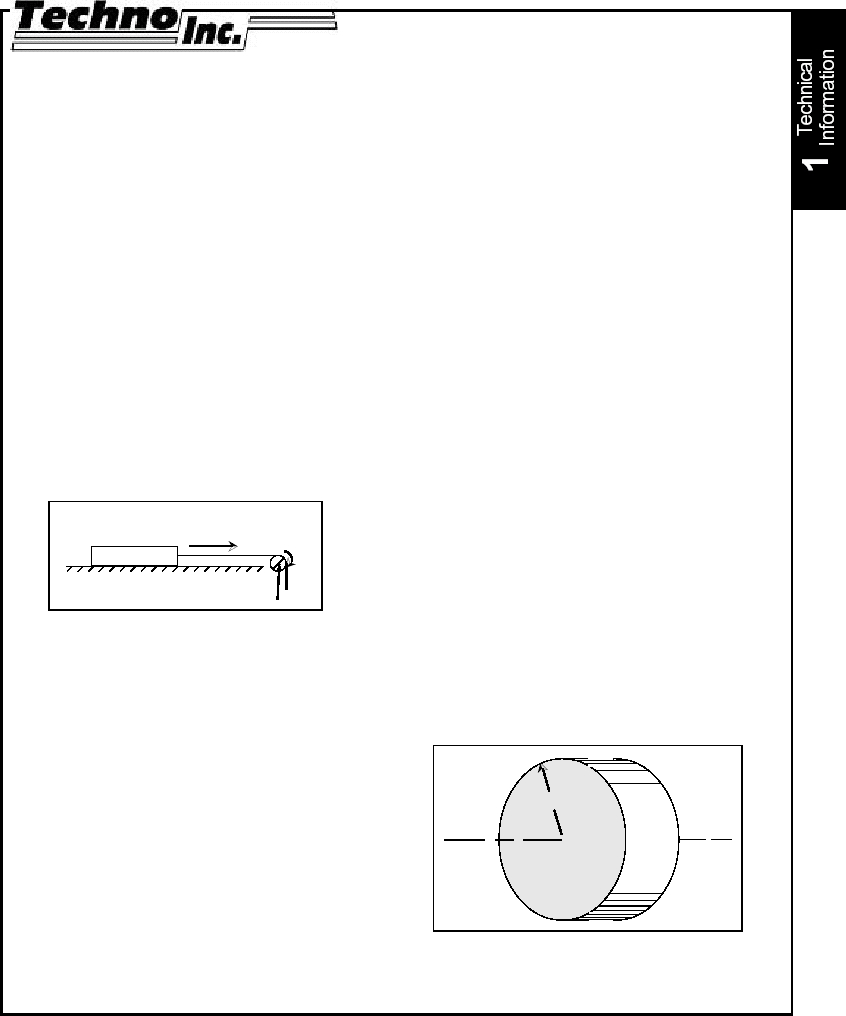Technical Information
techquestions@techno-isel.com
9
Torque:
T = FR
(1)
where:
T = Torque (lb•ft)
F = Force (lb)
R = Radius, or distance that the force is from the
pivotal point (ft)
Linear to rotary motion:
V
N = –––––––
(2)
0.262D
where:
N = Speed of shaft rotation (rpm)
V = Velocity of material (fpm)
D = Diameter of pulley or sprocket (in)
Horsepower:
Rotating objects:
TN
P = –––––––
(3)
5250
where:
P = Power (hp)
T = Torque (lb•ft)
N = Shaft speed (rpm)
Objects in linear motion:
FV
P = –––––––
(4)
33000
where:
P = Power (hp)
F = Force (lb)
V = Velocity (fpm)
Accelerating torque and force:
Of rotating objects:
(WK2) DN
T = –––––––––––
(5)
308t
where:
T
= Torque required (lb•ft)
WK2 = Total inertia of load to be accelerated (lb•ft2)
See formulas 7, 8, 9 and 10
DN = Change in speed (rpm)
t
= Time to accelerate load (sec)
Objects in linear motion:
W DV
F = –––––––
(6)
1933t
where:
F
= Force required (lb)
W
= Weight (lb)
DN = Change in velocity (fpm)
t
= Time to accelerate load (sec)
Moment of Inertia
Solid cylinder rotating about its own axis
1
WK2 = ––– WR2
(7)
2
where:
WK2 = Moment of inertia (lb•ft2)
W
= Weight of object (lb)
R
= Radius of cylinder (ft)
3) Basic Engineering Information
The following engineering information will help solve technical problems frequently encountered in designing
and selecting power transmission components and systems.
R
V
N
D
•
•
•
•
•

